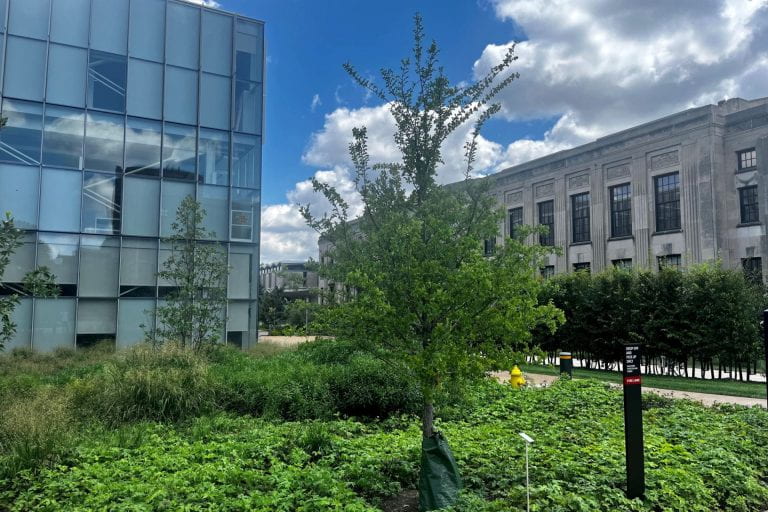Trees
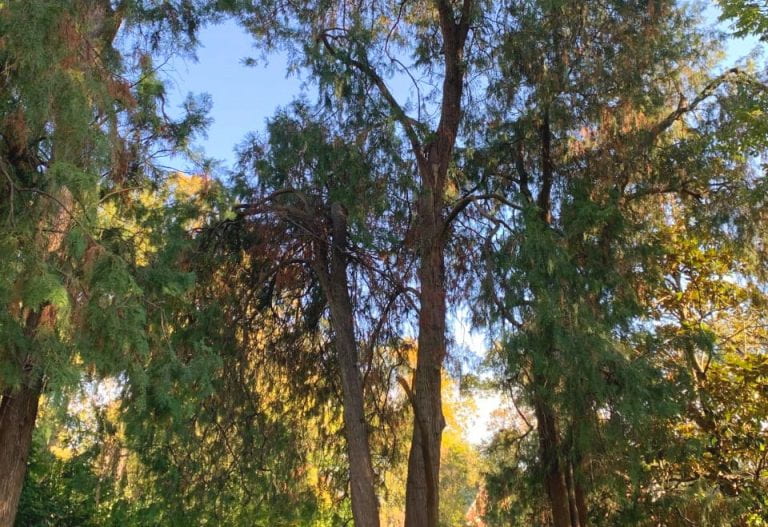
American Arborvitae
Arbor Walk #62, Treekeeper ID #4666
The American Arborvitae is most prevalent in eastern and central Canada, and found in Northern Illinois, Ohio, and New York as well as scattered populations further south. St. Louis is near the southern end of the tree's range, and it benefits from being in a slightly shadier location than they would prefer in their northern ranges.
American Basswood
Arbor Walk #153
This tree is a grafted clone of the original Basswood which has been growing in Brookings Quad for more than 100 years.
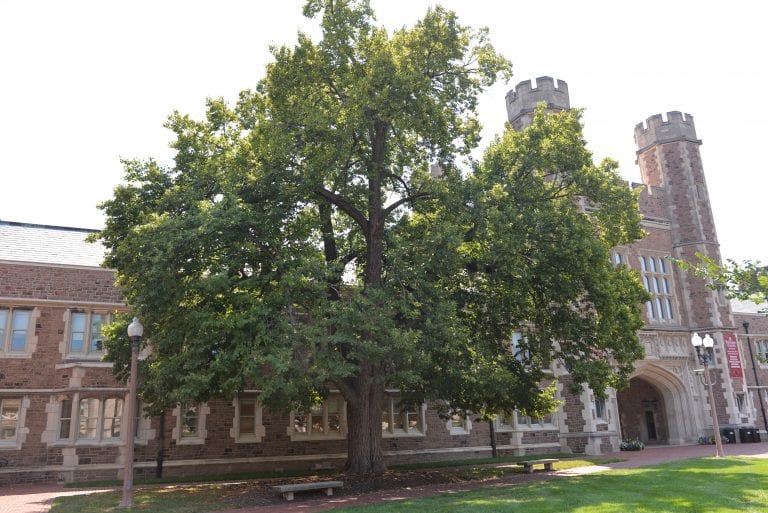
American Basswood (removed July 2023)
Arbor Walk #17, Treekeeper ID #1937
This is one of the oldest and largest trees on campus. It has large green leaves and small, sweetly scented flowers. Recently, efforts have been taken to preserve and continue on the genetic lineage of this tree whose history follows that of WashU's Danforth Campus.
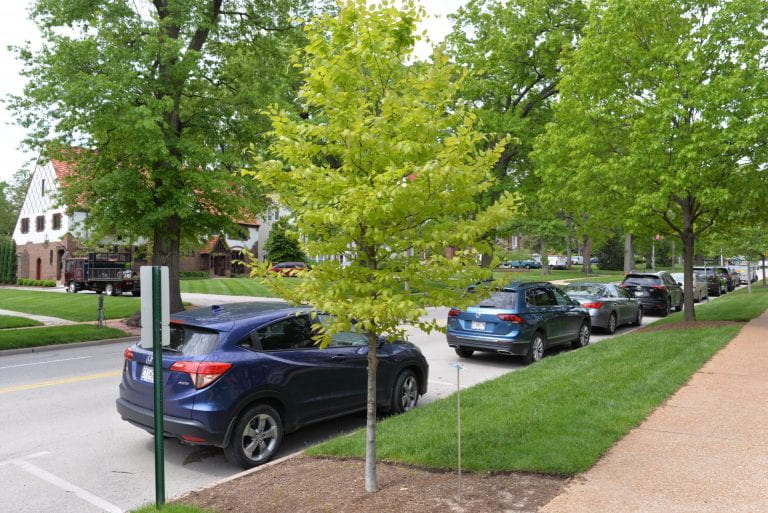
American Beech
Arbor Walk #48, Treekeeper ID #1979
This tree has dark green leaves which turn bronze in the fall. Its flowers are yellowish-green, and the female flowers yield edible beechnuts which ripen in the fall.
American Chestnut
Arbor Walk #111, Treekeeper ID #6353
The American Chestnut is a historically and cuturally important tree that unfortunately has a sad story. This species used to be one of the biggest and most numerous trees in the Eastern United States, but it is now considered functionally extinct.
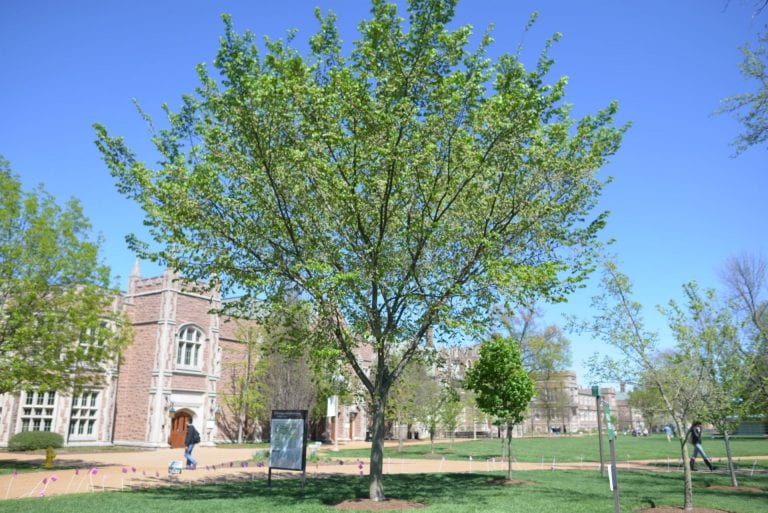
American Elm
Arbor Walk #31, Treekeeper ID #2408
The American Elm is native to much of Eastern North America and grows in low, moist areas and along streams across the state of Missouri.
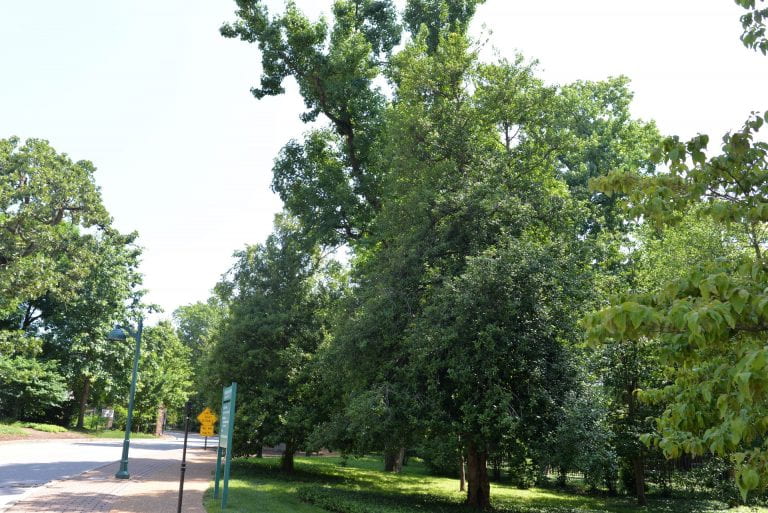
American Holly
Arbor Walk #69, Treekeeper ID #3034
The American Holly is a broad-leaved evergreen tree reaching 40 to 50 feet high, densely pyramidal in youth becoming more open and symmetrically conical with age.
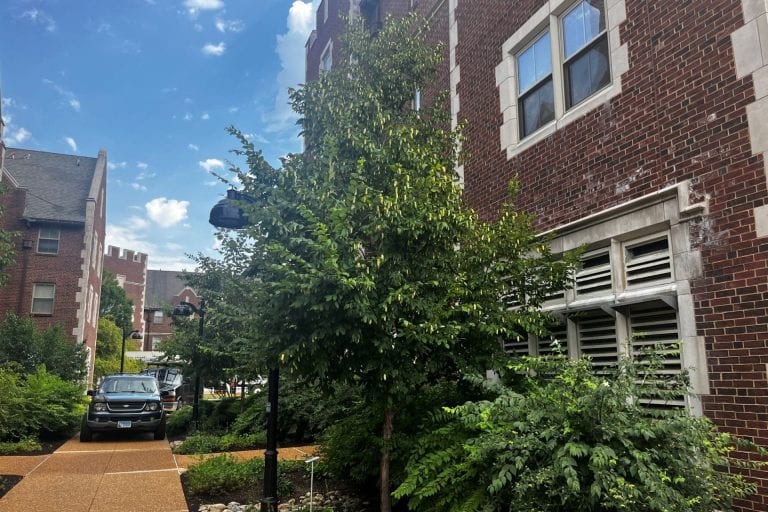
American Hop Hornbeam
Arbor Walk #112
Native to much of the continental U.S., the American Hop Hornbeam is a great tree. It has orangish-brown, loose bark and catkins that stay on over winter making it an interesting and beautiful tree year-round.
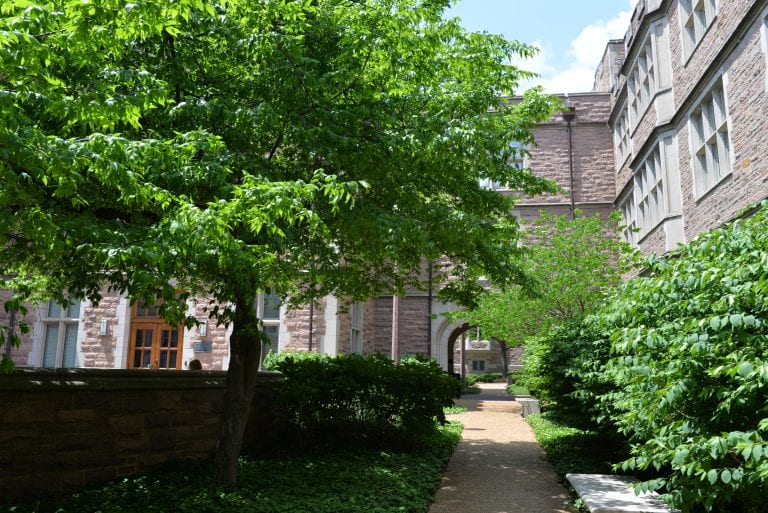
American Hornbeam
Arbor Walk #20, Treekeeper ID #1933
Native to the midwest, the American Hornbeam typically grows as an understory tree, in wetter areas. Its leaf is dark green, ovate, with doubly serrated edges.
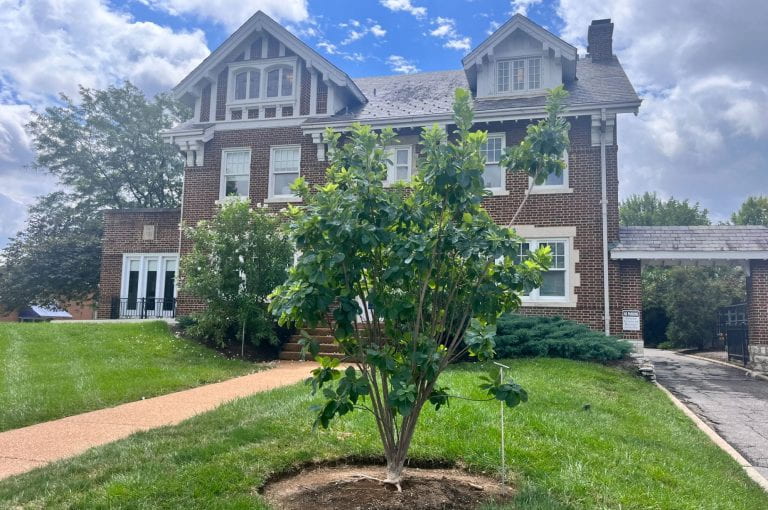
American Smoketree
Arbor Walk #166
The American Smoketree is a Missouri native tree with fabulous color in the spring and summer, thanks to its smoke-like purple-haired inflorescences.
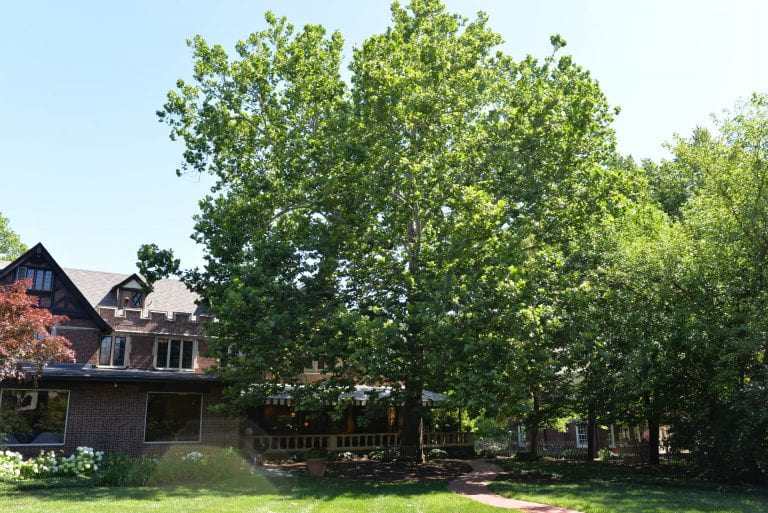
American Sycamore
Arbor Walk #60, Treekeeper ID #5449
The Sycamore is regarded as one of the largest trees native to eastern North America, and was historically prized by Native Americans for the construction of dugout canoes. Ecologically, they are early colonizers to newly available habitat, and support animal shelters as they mature.
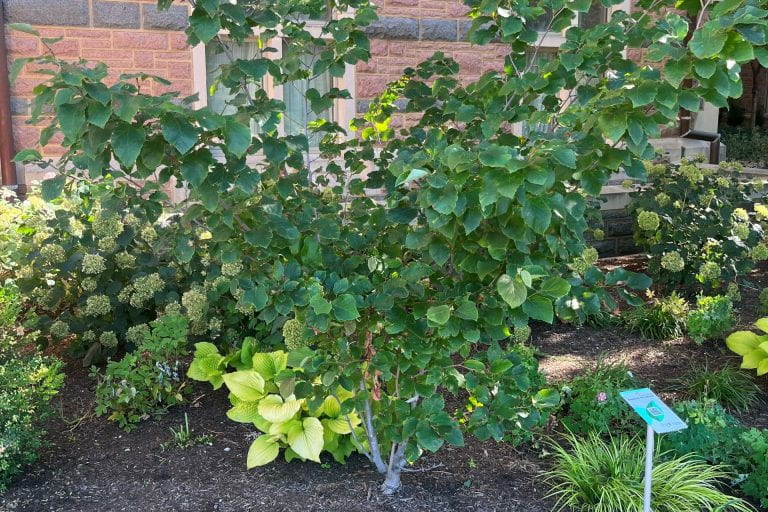
American Witchhazel
Arbor Walk #119
The American Witchhazel is one of the few deciduous woody plants that flowers after the leaves fall. It typically flowers during October to December.
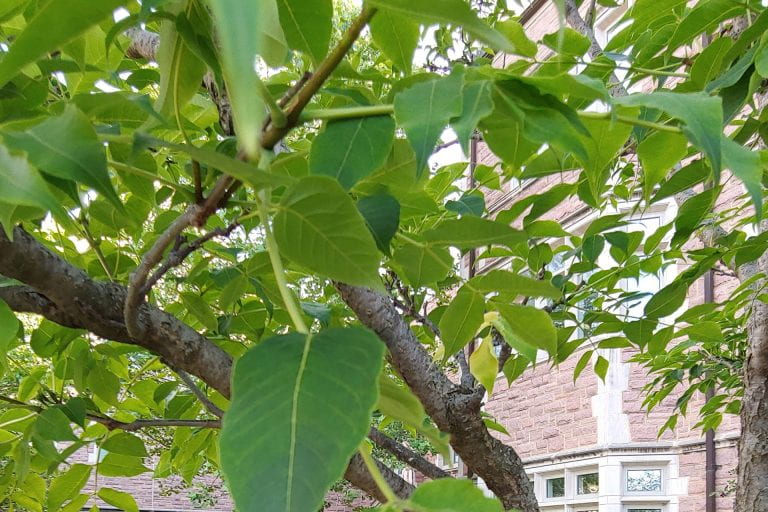
Amur Cork Tree
Arbor Walk #101, Treekeeper ID #1905
The Amur Cork Tree is native to China and Japan. The species is able to tolerate some drought conditions and urban pollutants. They are known for attractive, furrowed bark that resembles cork, as is apparent within its name.
Arizona Sycamore
Arbor Walk #171, Treekeeper ID #7177
The Arizona Sycamore is one of three native sycamore species in North America, and is the species with the most limited range.
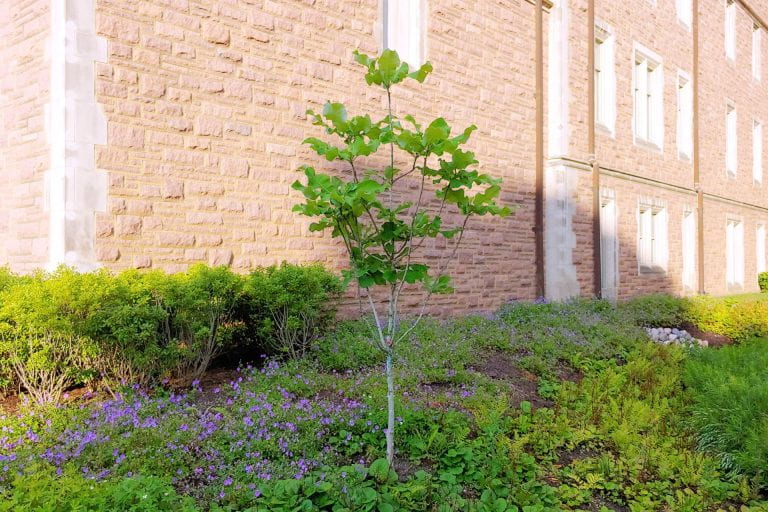
Ashe’s Magnolia
Arbor Walk #92, Treekeeper ID #4775
The Ashe’s Magnolia is a regional native to the Southeastern US and adaptable to the St. Louis Region, typically growing to 10’ to 20’ tall and 10’ to 15’ wide.
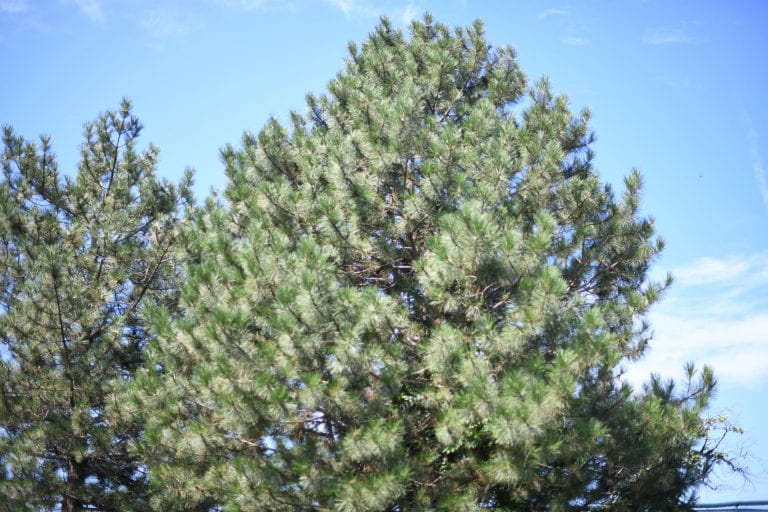
Austrian Pine
Arbor Walk #83, Treekeeper ID #3668
This is a medium to large conifer than is native to Europe and Asia. They are dense and pyramidal when young and round with age. These trees feature spreading branches, stiff, dark green needles in bundles, and oval cones.
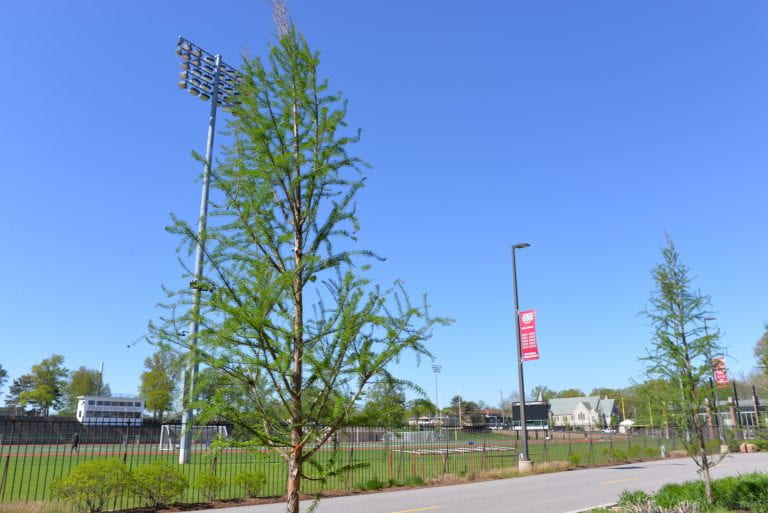
Bald Cypress
Arbor Walk #37, Treekeeper ID #2507
The Bald Cypress is the state tree of Louisiana. Despite its resemblance to a needled evergreen tree in the summer, it is actually deciduous. The 'Mickelson' is a cultivar of the Bald Cypress, and has a narrower shape and denser foliage than the native species.
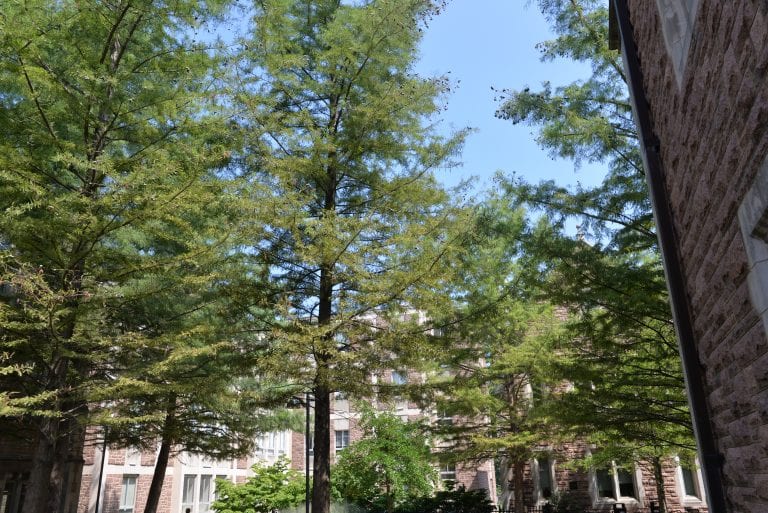
Bald Cypress
Arbor Walk #16, Treekeeper ID #1427
This tree is native to wetlands and swamps in the Midwest but is adaptable to urban conditions. Its needlelike foliage turns russet red and drops in the fall.
Beach Plum
Arbor Walk #143, Treekeeper ID #6824
This fruit tree derives its name from its restricted habitat in sandy areas like beaches, dunes, and tidal streams.
Bebb’s Hybrid Oak
Arbor Walk #145, Treekeeper ID #6550
This oak is a spontaneously occurring hybrid of the White Oak (Quercus alba) and the Bur Oak (Q. macrocarpa).
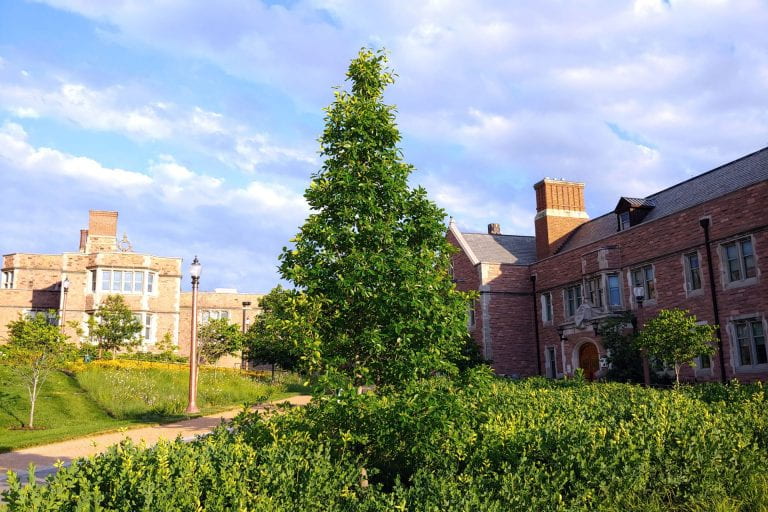
Black Gum
Arbor Walk #91, Treekeeper ID #5922
The Black Gum, also known regionally as Black Tupelo, is a part of the Nyssaceae family, which used to be under the dogwood family.
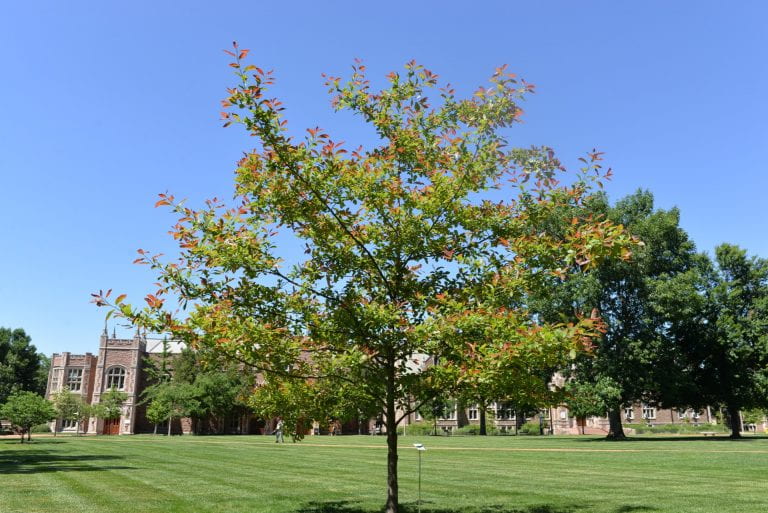
Black Gum
Arbor Walk #32, Treekeeper ID #2247
The Black Gum, also called Tupelo, is a Missouri native and flexible mid-western species capable of growing in both standing water and rocky slopes.
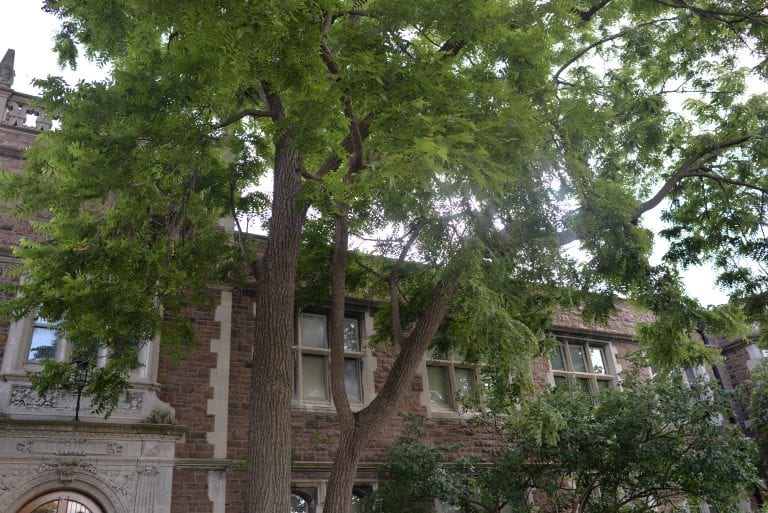
Black Walnut
Arbor Walk #18, Treekeeper ID #1386
This is a large native tree whose wood is used for woodworking in the furniture and cabinet industry.
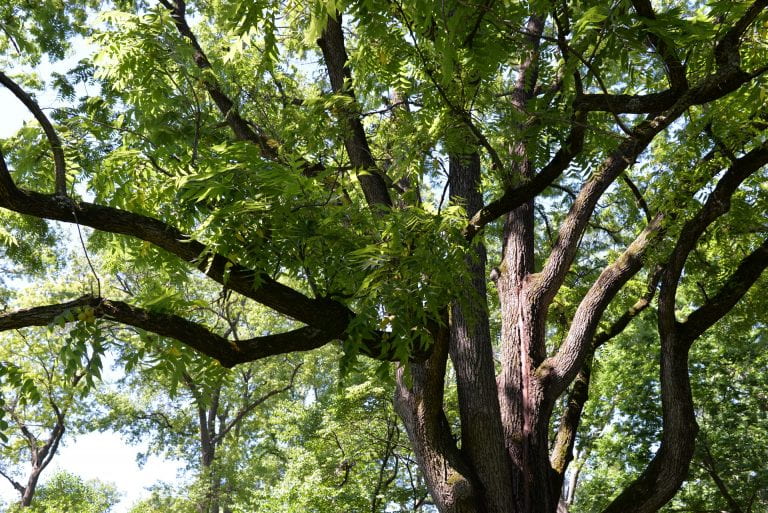
Black Walnut (Deaccessioned)
Arbor walk #61, Treekeeper ID #5016
This is a large deciduous tree common to woodlands in the eastern United States from Massachusetts to Texas. It is natively found in rich woods and fertile river valleys across the state of Missouri.
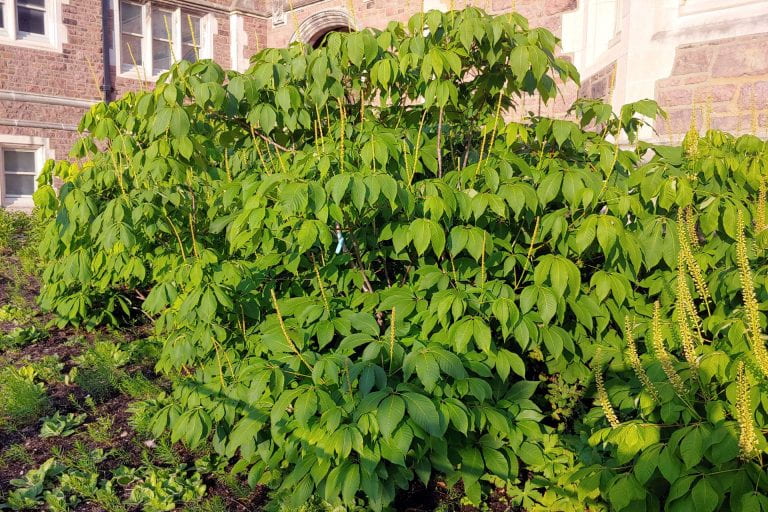
Bottlebrush Buckeye
Arbor Walk #89
Bottlebrush Buckeye is not native to Missouri but is very adaptable to the St. Louis Region. It is a multiple stem understory small tree or large shrub which colonizes by suckering.
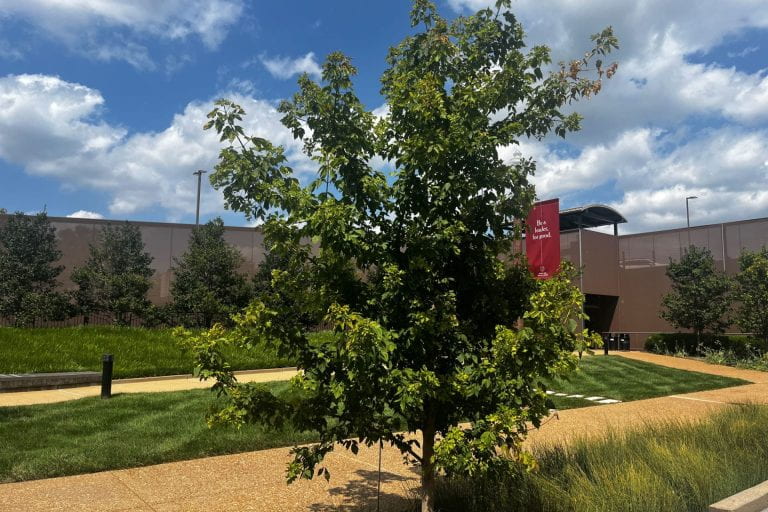
Boxelder Maple
Arbor Walk #118
Boxelder Maple is notable because of the usual leaves this species has compared to all other native maples. Instead of the normal simple leaf, it instead has compound leaves, which means it has leaflets.
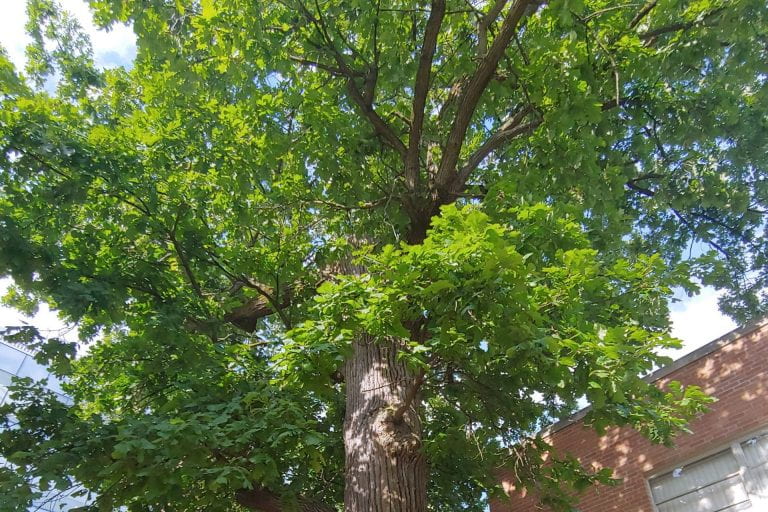
Bur Oak
Arbor walk #108, Treekeeper ID #1757
This tree is in the Fragaceae family and is native to Missouri. It is a deciduous tree with broad and rounded crown, which is good for shading. The leaves are leathery, dark green and turn to yellow-brown in fall. The oval acorns is large in size with fringed burry cups.
Butternut
Arbor Walk #161
Although this tree has a broad range within the Upper Midwest and Northeast United States, it is uncommon in most of its range, being overshadowed by its ubiquitous relative Juglans nigra, the black walnut. Its lack of prominence is mainly caused by the deadly butternut canker, which only affects J. cinerea.
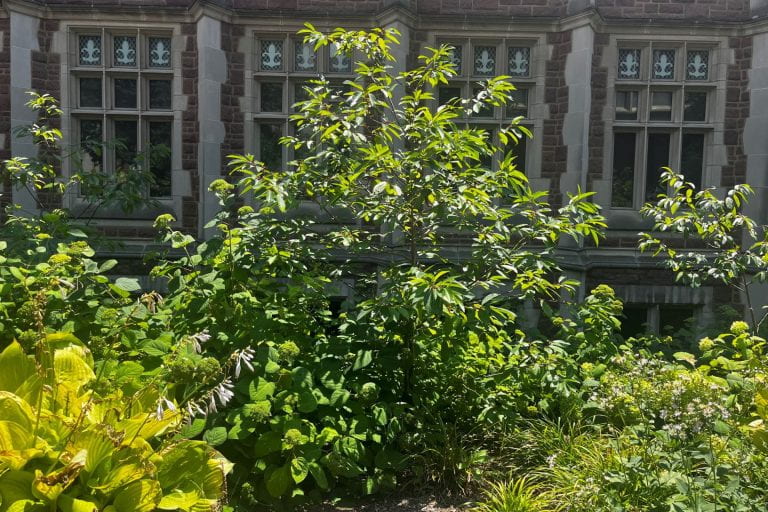
Carolina Buckthorn
Arbor Walk #130
Even though it is called a buckthorn, Carolina Buckthorn has no spines. The shrub is well known for its bright red drupes during the summer. The fruit eventually mature to black and attracts many wildlife species, especially birds.
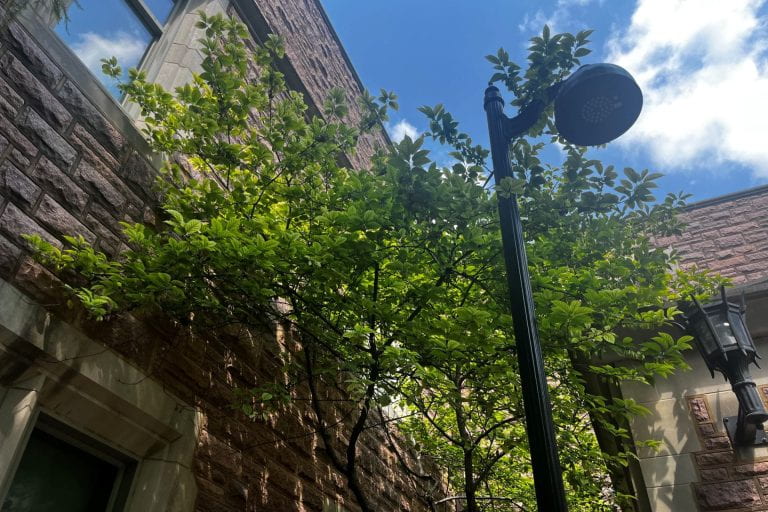
Carolina Silverbell
Arbor Walk #132
The best place to find this plant in the wild is the Great Smokey Mountains where they thrive. Squirrels love the four-winged, dry fruit, and Tennessee beekeepers describe it as a great honey tree. The wood is also sometimes used for cabinets, veneer, and carvings.
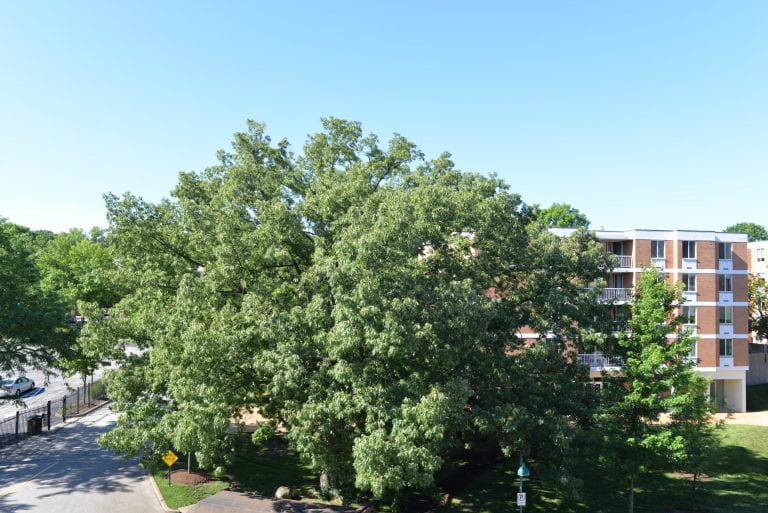
Cherrybark Oak
Arbor walk #71, TreeKeeper ID #3472
Cherrybark Oak is a medium to large-sized deciduous tree native to the Southern US including the southeast corner of Missouri. The Cherrybark Oak looks very similar to another Missouri native, Southern Red Oak. So much so, that this tree was mislabeled as a Southern Red Oak for many years in the Arboretum.
Chestnut Oak
Arbor Walk #152, Treekeeper ID #6051
The Chestnut Oak has a native range just bordering but not within Missouri; it thrives in dry uplands from southern Maine to the Mississippi but primarily in the Appalachian Mountains.
Chinese Redbud
Arbor Walk #148
The Chinese Redbud is within the same genus as the Eastern Redbud, but features larger, bright magenta flowers and glossy heart-shaped leaves.
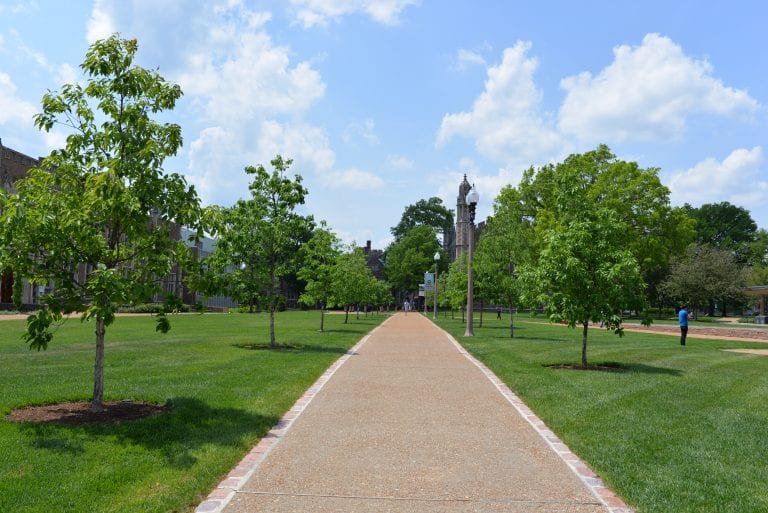
Chinkapin Oak
Arbor Walk #26, Treekeeper ID #1345
Native to the Midwest, the Chinkapin Oak can be easily recognized due to its small, toothed leaves. Unlike most oaks, the Chinkapin has unusually flaky and fissured bark.
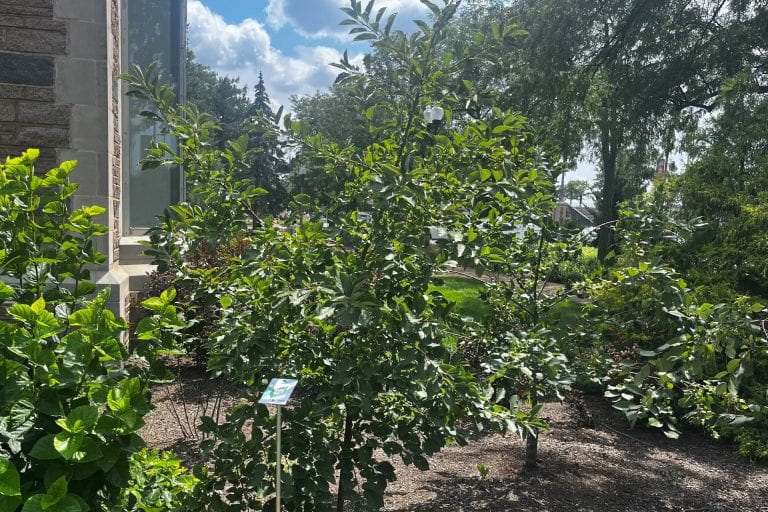
Chokecherry
Arbor Walk #123
The wild Chokecherry is usually found in dense thickets due to its vast root system which can sprout runners, but on campus you will find them managed to prevent this. It blooms beautiful white flowers that eventually turn into dark purple fruit.
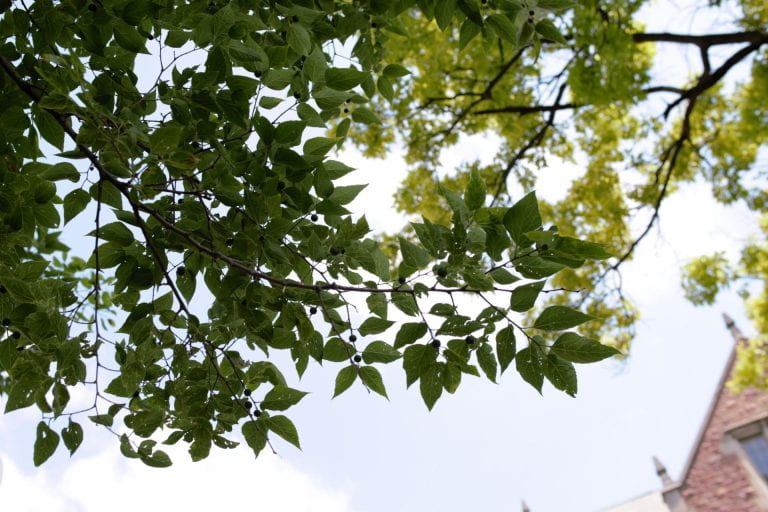
Common Hackberry
Arbor walk #8, Treekeeper ID #1696
This native tree performs well in urban conditions and is easily identified by its distinctive corky bark. But be careful because there are other relatives that are native to Missouri that have very similar bark.
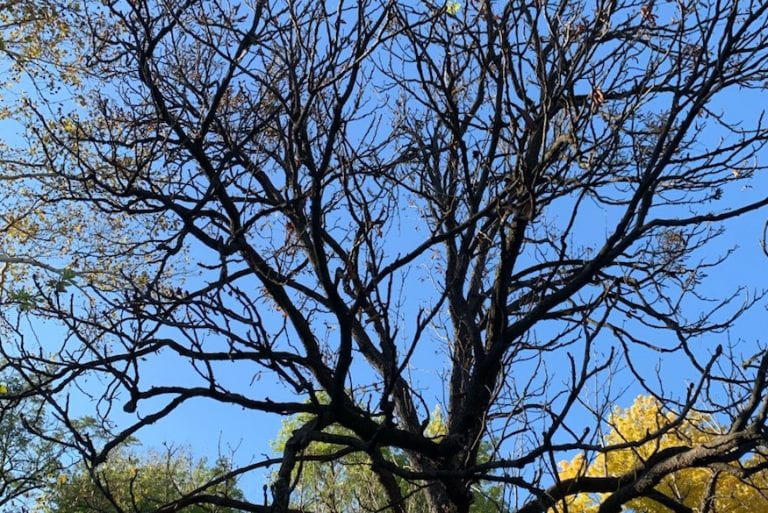
Common Horse Chestnut
Arbor walk #64, Treekeeper ID #5490
Despite being widely planted as an easy-to-grow shade tree for streets and landscapes throughout the Midwest, the Common Horse Chestnut is originally native to the Balkan region of Europe. The tree features showy white flowers in spring which in summer transition into fruit, consisting of one or two seeds encased in a spiny husk.
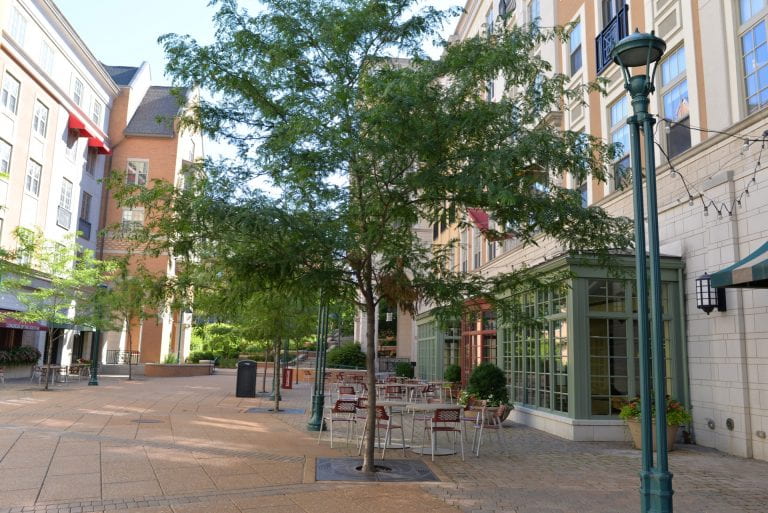
Common Thornless Honeylocust
Arbor walk #78, Treekeeper ID #3229
The Honeylocust is a tough, medium-sized shade tree that usually grows around 60′ to 80′ tall. It has greenish-yellow to greenish-white flowers that appear in May or June.
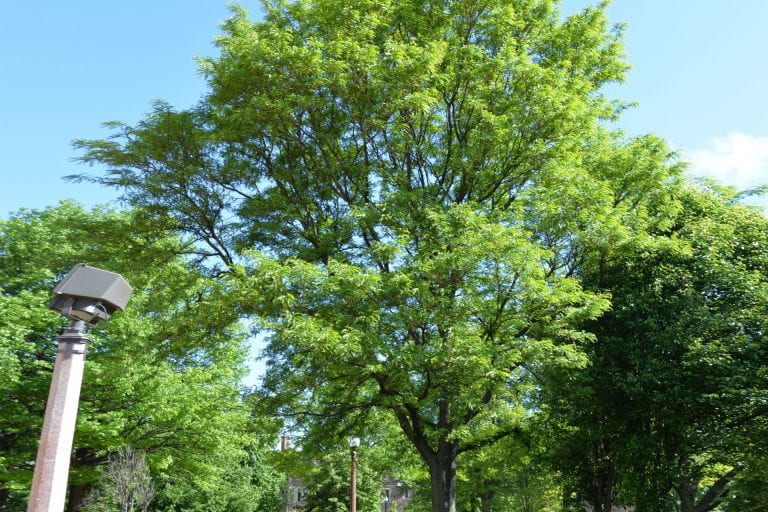
Common Thornless Honeylocust
Arbor walk #28, Treekeeper ID #1610
This is a native plant, but if found in nature, its bark would likely be covered in long, sharp thorns. Arborists tend to plant this natural, thornless variant of the tree to allow people to see its beauty without obtaining injuries.
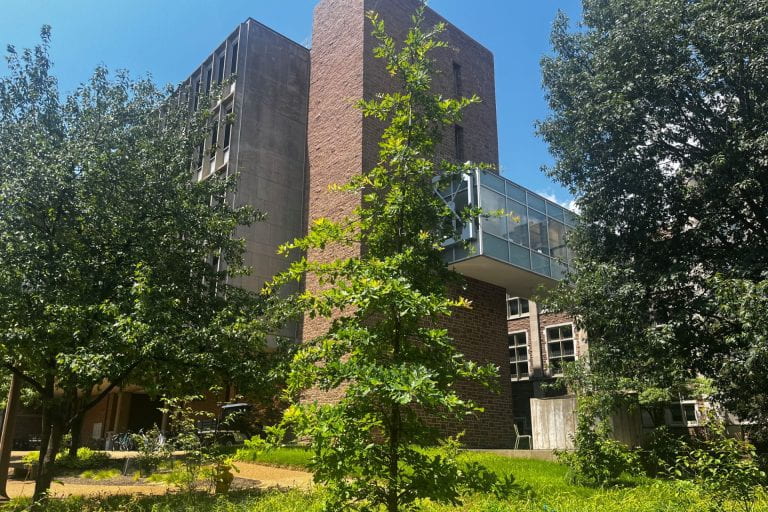
Compton Hybrid Oak
Arbor Walk #128
The Compton Hybrid Oak is a natural hybrid between the Southern Live Oak and the Overcup Oak and can be found in the areas with overlapping distributions of the two parent species.
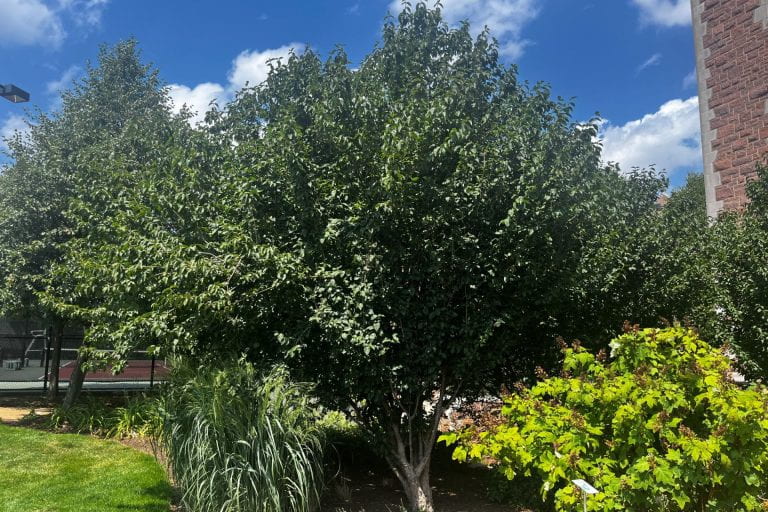
Cornelian Cherry Dogwood
Arbor Walk #122
A beautiful non-native from Europe and Asia, this tree shows off its gorgeous star-shaped, yellow flowers in early spring before its leaves emerge.
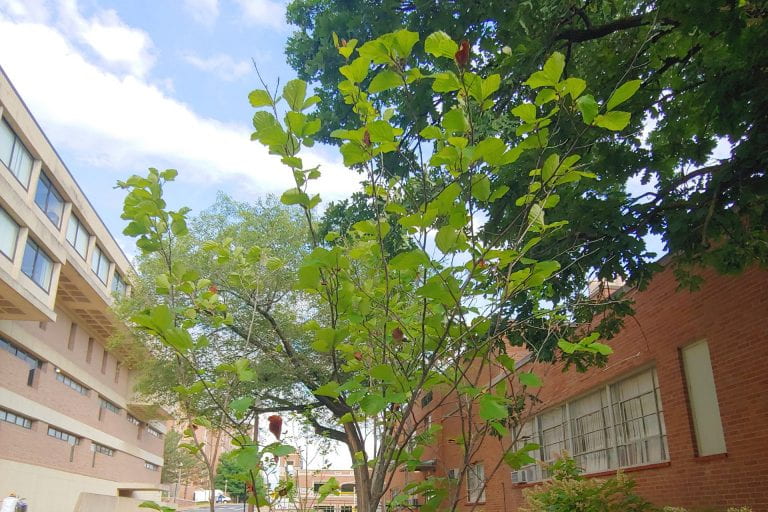
Cucumber Tree Magnolia
Arbor walk #107, Treekeeper ID #5717
This tree is in the Magnoliaceae family and is native to Missouri. The cucumber tree is named by its cucumber-like fruit. The fruit is 2" to 3" long, slightly curved, and cylindrical, and to add to the cucumber appearance, the immature fruit is also green.
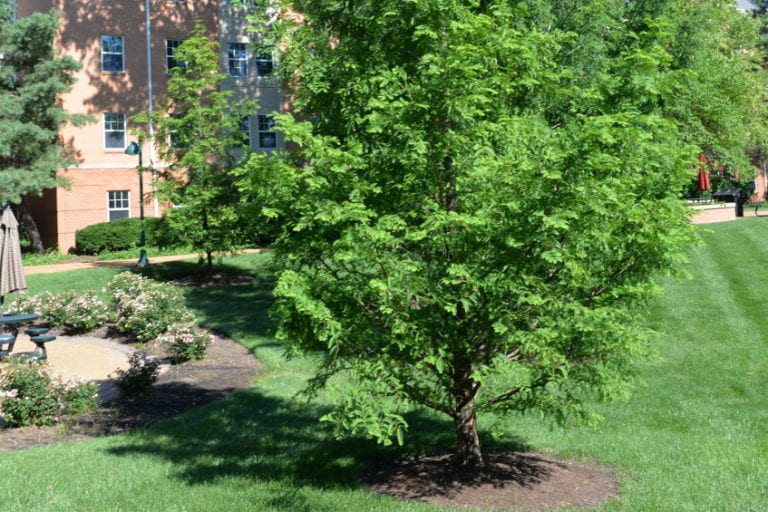
Dawn Redwood
Arbor walk #73, Treekeeper ID #2196
The Dawn Redwood is considered a living fossil because it was only known due to the fossil remains from individuals that lived with the dinosaurs. It was not until the 1940's that a small population was discovered in a remote valley of the Szechwan province of China.
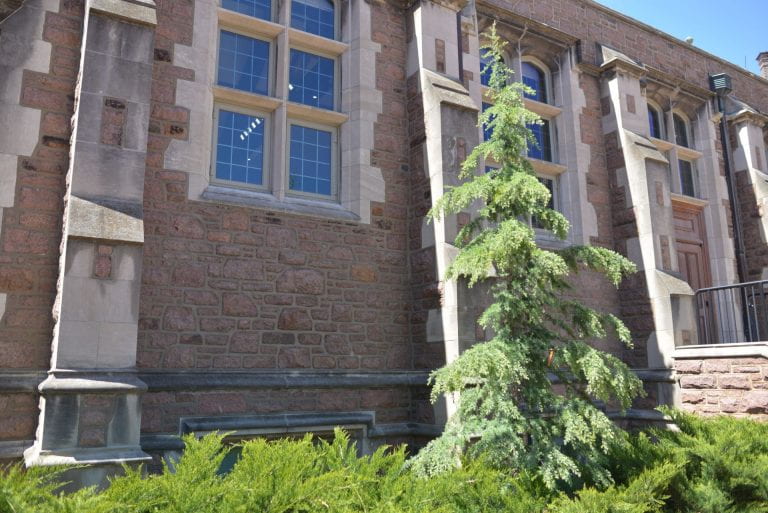
Deodar Cedar
Arbor walk #34, Treekeeper ID #3817
This tree species is originally native to the Himalayas range, but due to its high tolerance to heat for a true cedar, it is able to grow in certain specific conditions in the United States such as the St. Louis area.
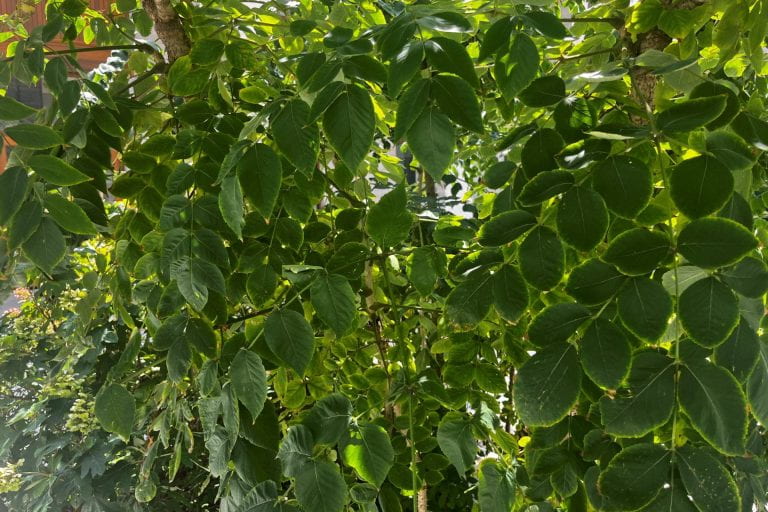
Devil’s Walking Stick
Arbor Walk #121
This tree has many interesting features including late summer flowers, juicy black drupes, gigantic compound leaves, and sharp prickles covering many parts of the plant.
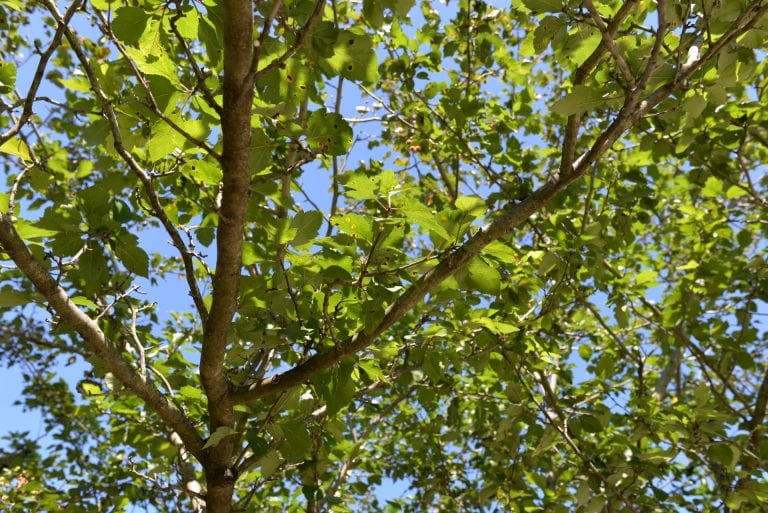
Downy Hawthorn
Arbor walk #67, Treekeeper ID #1716
The Downy Hawthorn is a deciduous tree in the rose family, and is native to the Midwest. Despite the unpleasant scent and the presence of long thorns, the tree is much loved for the beauty of its flowers in the spring and fruits in the summer.
